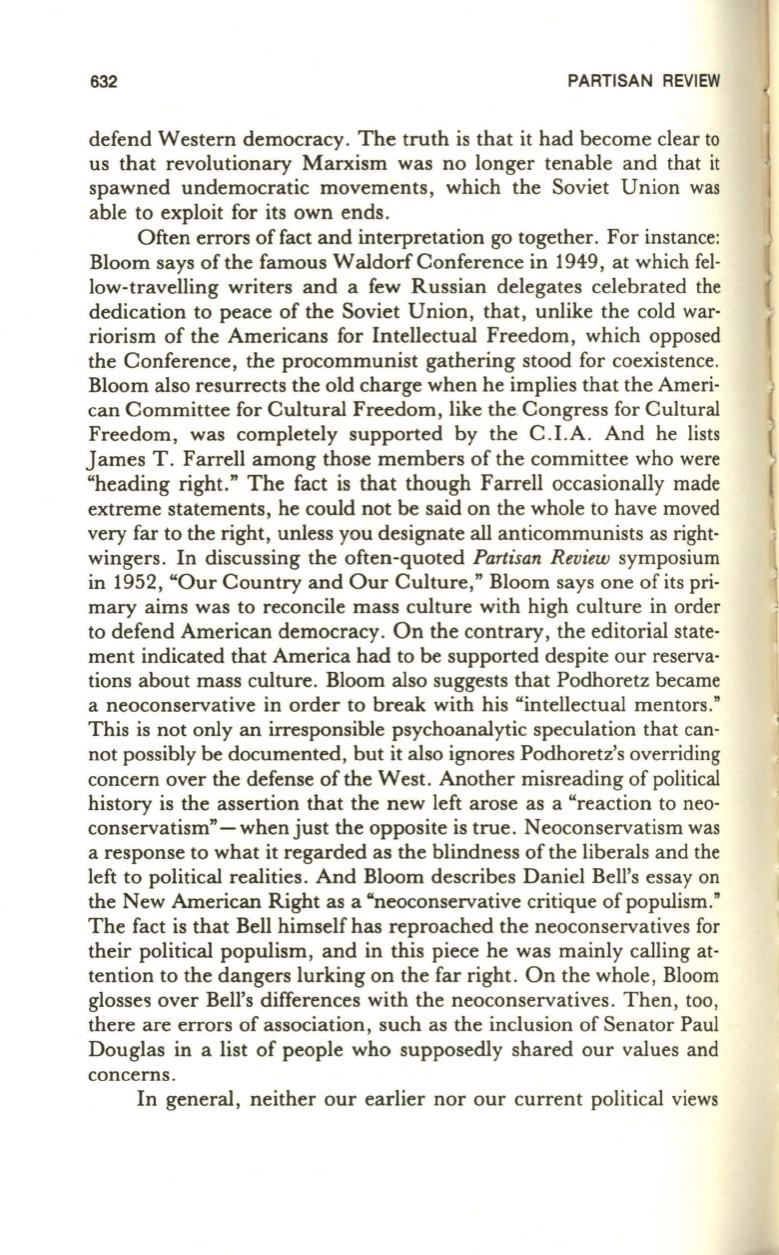
632
PARTISAN REVIEW
defend Western democracy. The truth is that it had become clear to
us that revolutionary Marxism was no longer tenable and that it
spawned undemocratic movements, which the Soviet Union was
able to exploit for its own ends.
Often errors of fact and interpretation go together. For instance:
Bloom says of the famous Waldorf Conference in 1949, at which fel–
low-travelling writers and a few Russian delegates celebrated the
dedication to peace of the Soviet Union, that, unlike the cold war–
riorism of the Americans for Intellectual Freedom, which opposed
the Conference, the procommunist gathering stood for coexistence.
Bloom also resurrects the old charge when he implies that the Ameri–
can Committee for Cultural Freedom, like the.Congress for Cultural
Freedom, was completely supported by the C.I .A. And he lists
James T. Farrell among those members of the committee who were
"heading right." The fact is that though Farrell occasionally made
extreme statements, he could not be said on the whole to have moved
very far to the right, unless you designate all anticommunists as right–
wingers. In discussing the often-quoted
Partisan Review
symposium
in 1952, "Our Country and Our Culture," Bloom says one of its pri–
mary aims was to reconcile mass culture with high culture in order
to defend American democracy. On the contrary, the editorial state–
ment indicated that America had to be supported despite our reserva–
tions about mass culture. Bloom also suggests that Podhoretz became
a neoconservative in order to break with his "intellectual mentors ."
This is not only an irresponsible psychoanalytic speculation that can–
not possibly be documented, but it also ignores Podhoretz's overriding
concern over the defense of the West. Another misreading of political
history is the assertion that the new left arose as a "reaction to neo–
conservatism"-whenjust the opposite is true . Neoconservatism was
a response to what it regarded as the blindness of the liberals and the
left to political realities. And Bloom describes Daniel Bell's essay on
the New American Right as a "neoconservative critique of populism."
The fact is that Bell himself has reproached the neoconservatives for
their political populism, and in this piece he was mainly calling at–
tention to the dangers lurking on the far right. On the whole, Bloom
glosses over Bell's differences with the neoconservatives . Then, too,
there are errors of association, such as the inclusion of Senator Paul
Douglas in a list of people who supposedly shared our values and
concerns.
In general, neither our earlier nor our current political views


